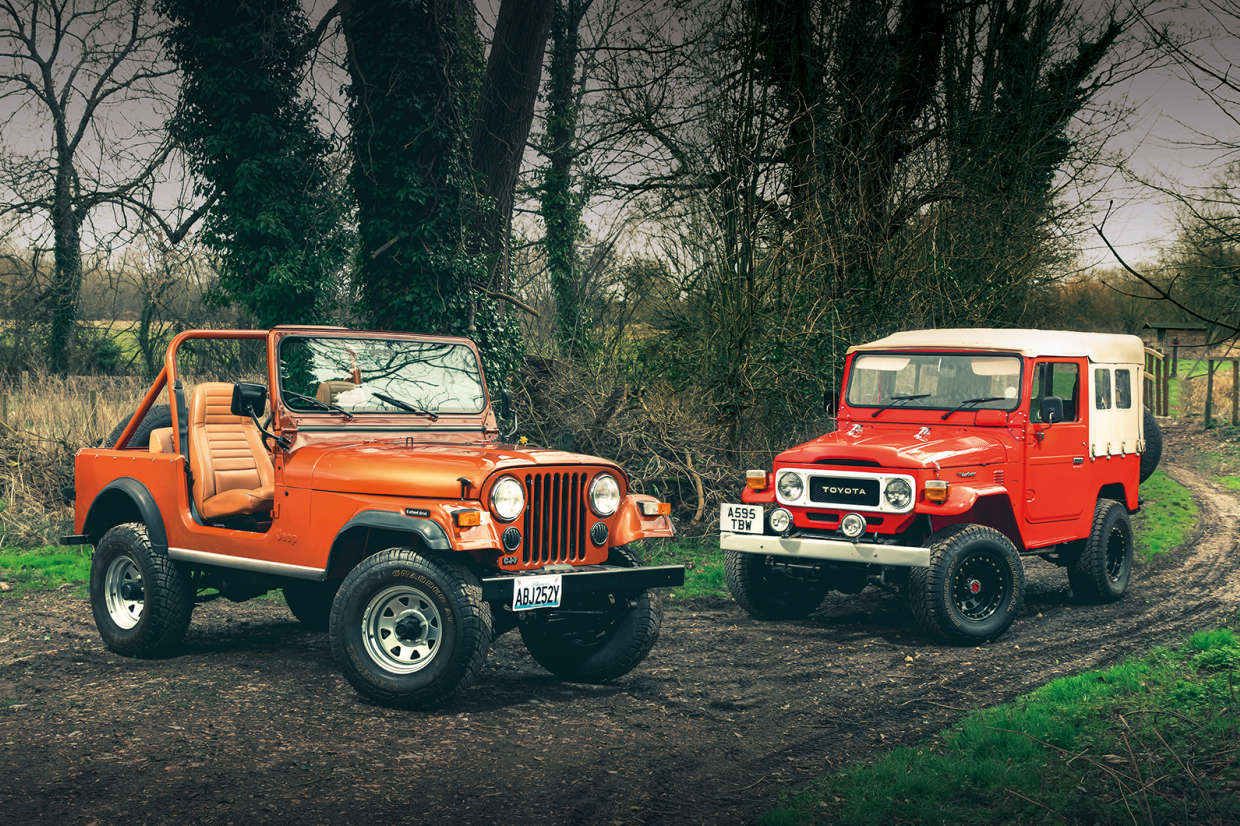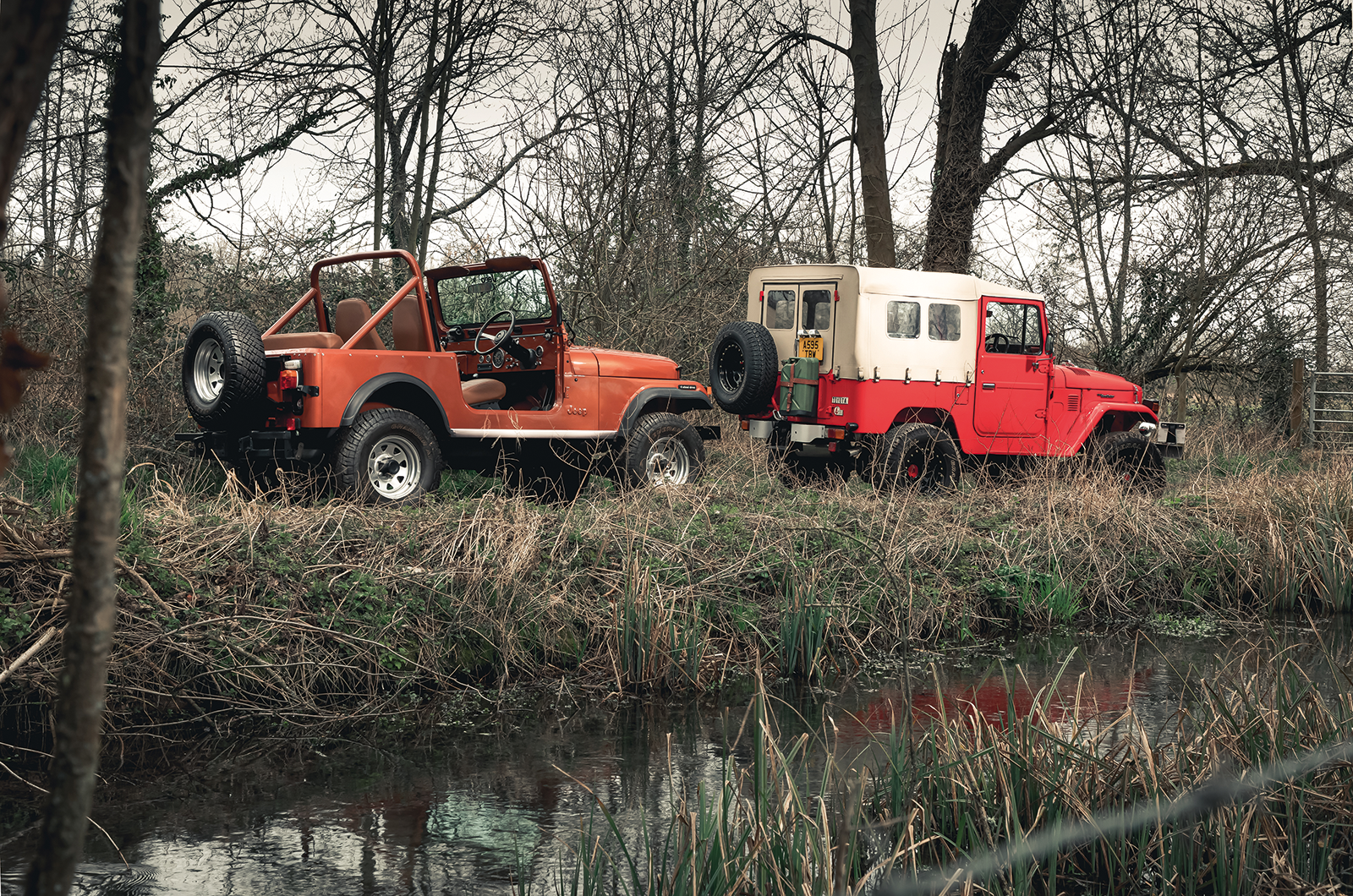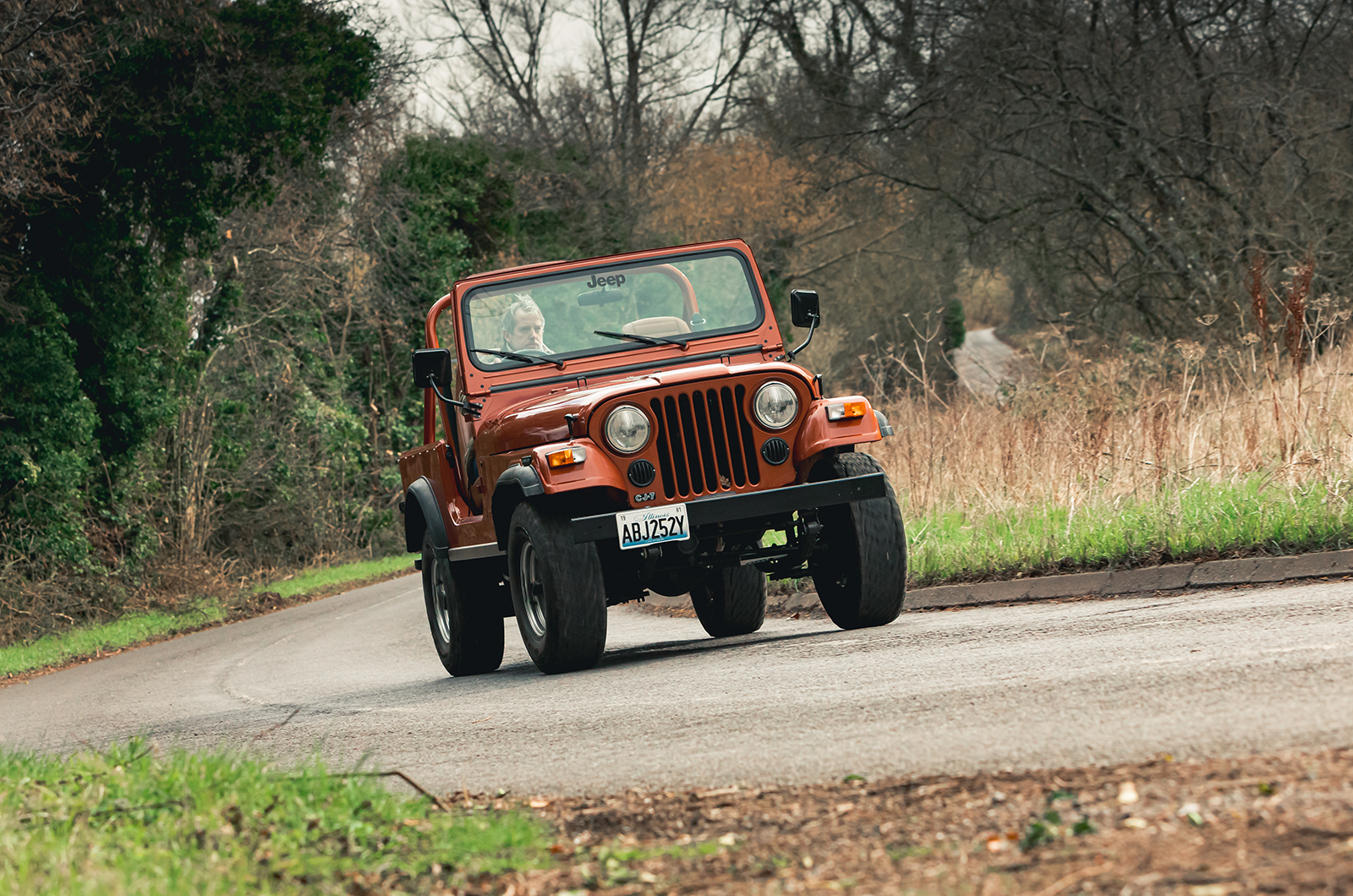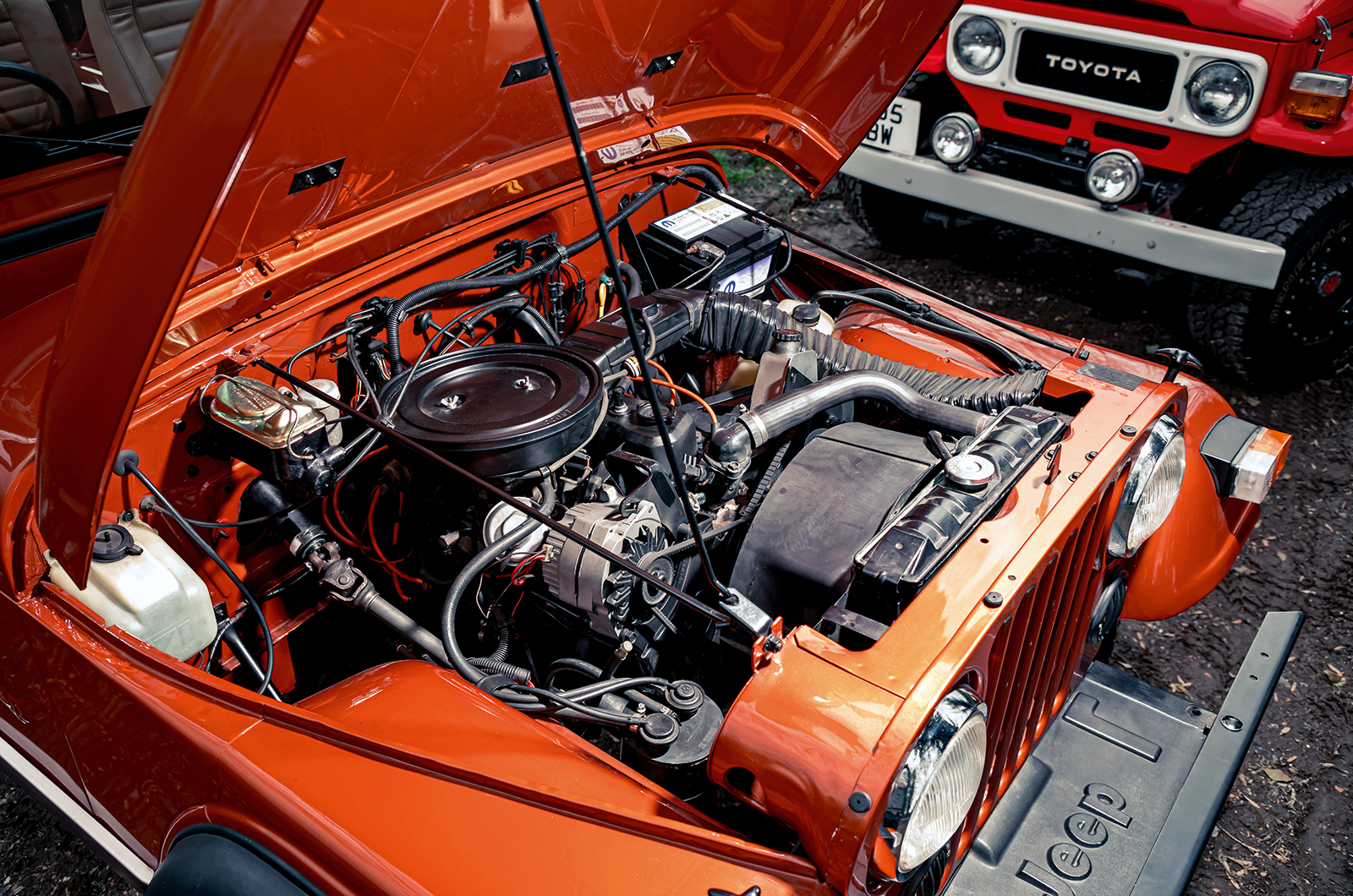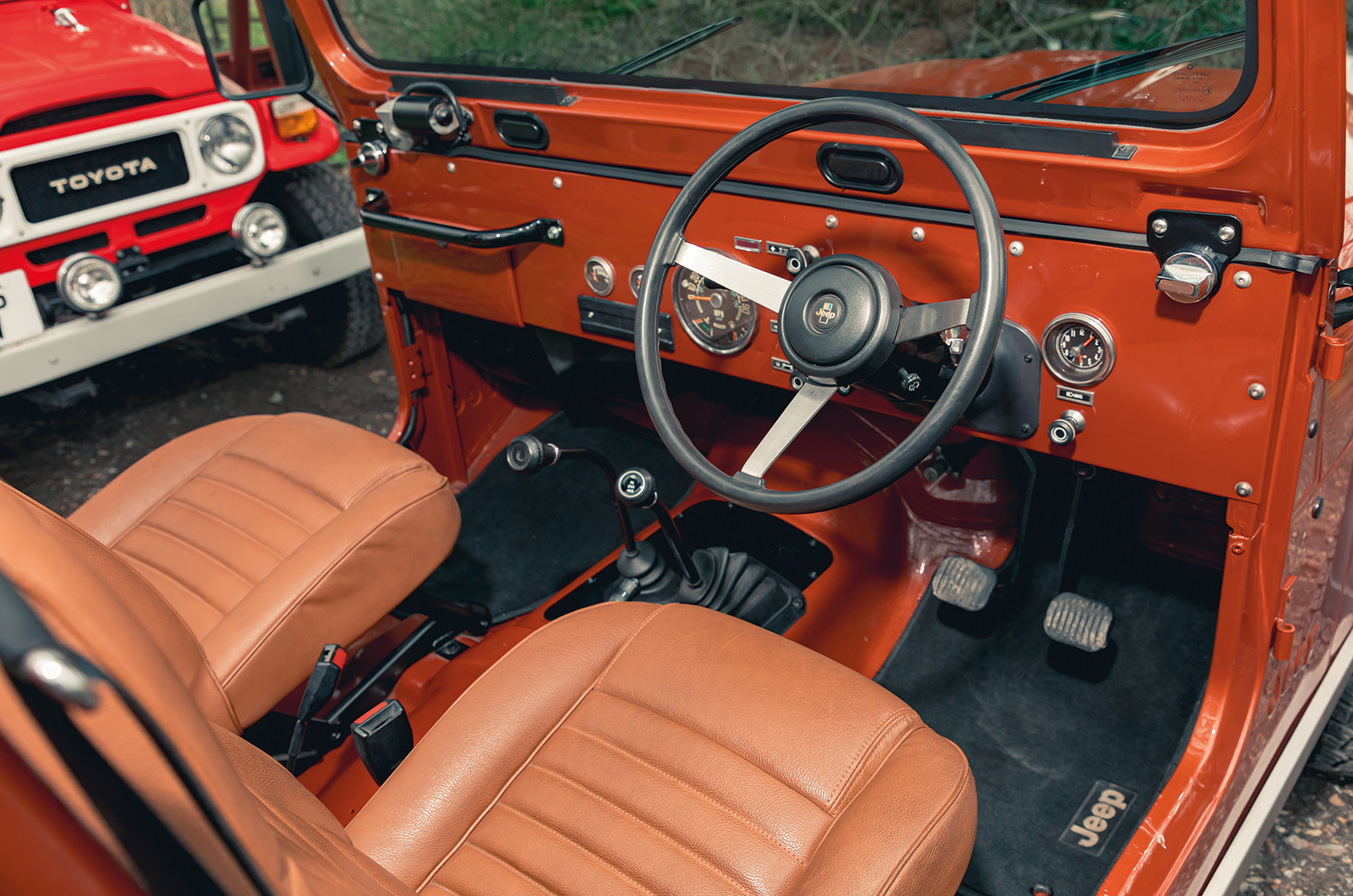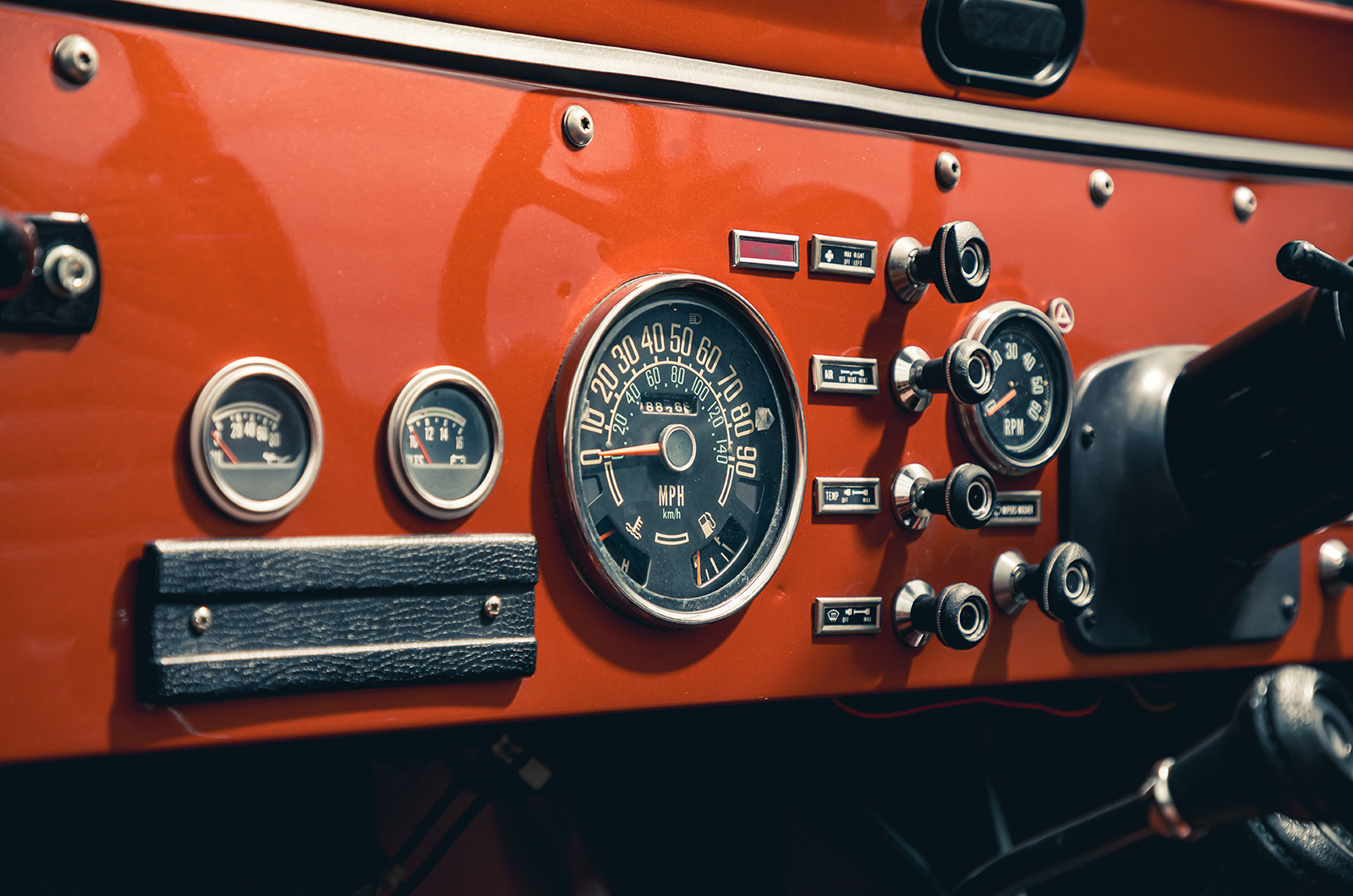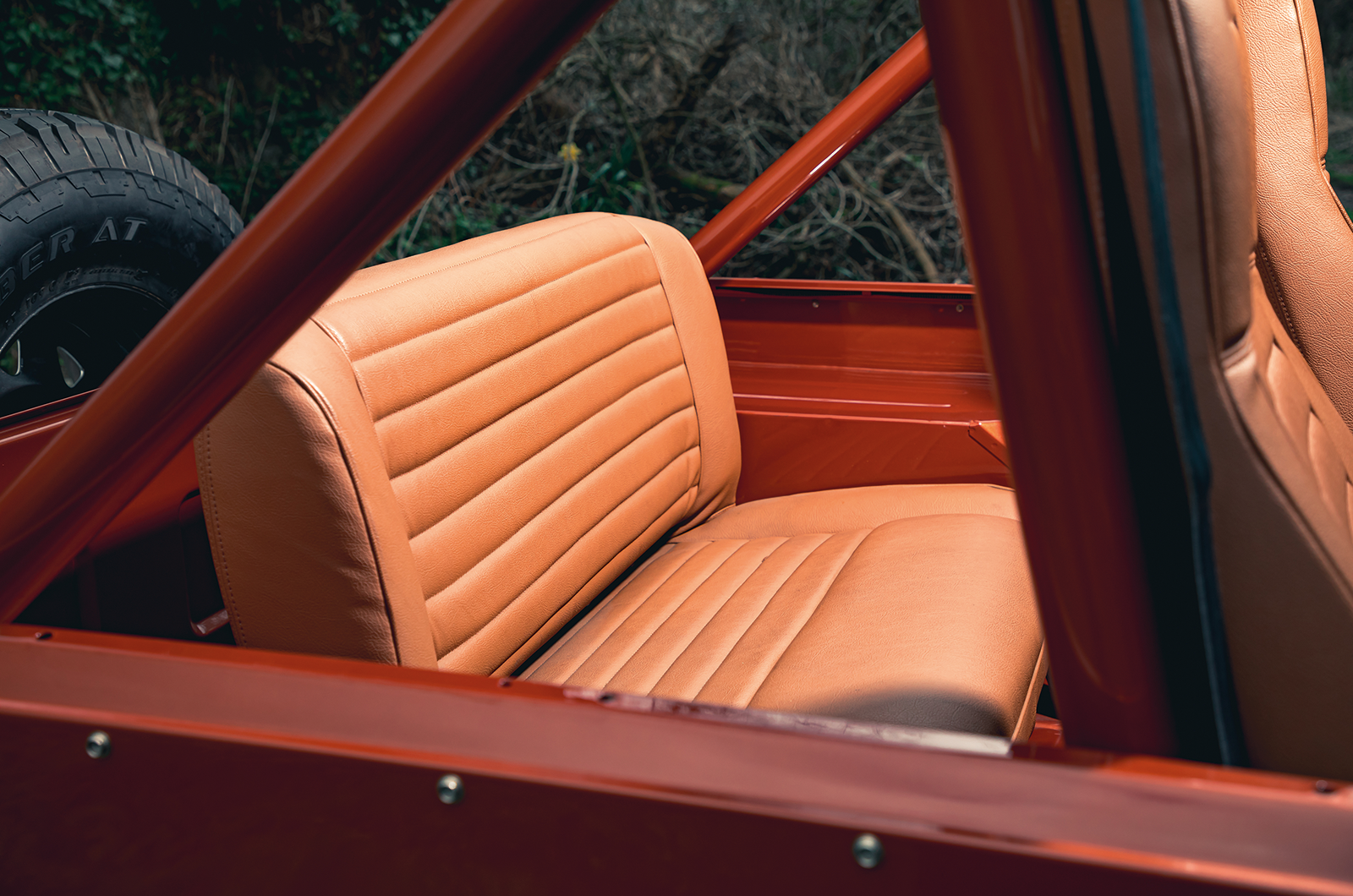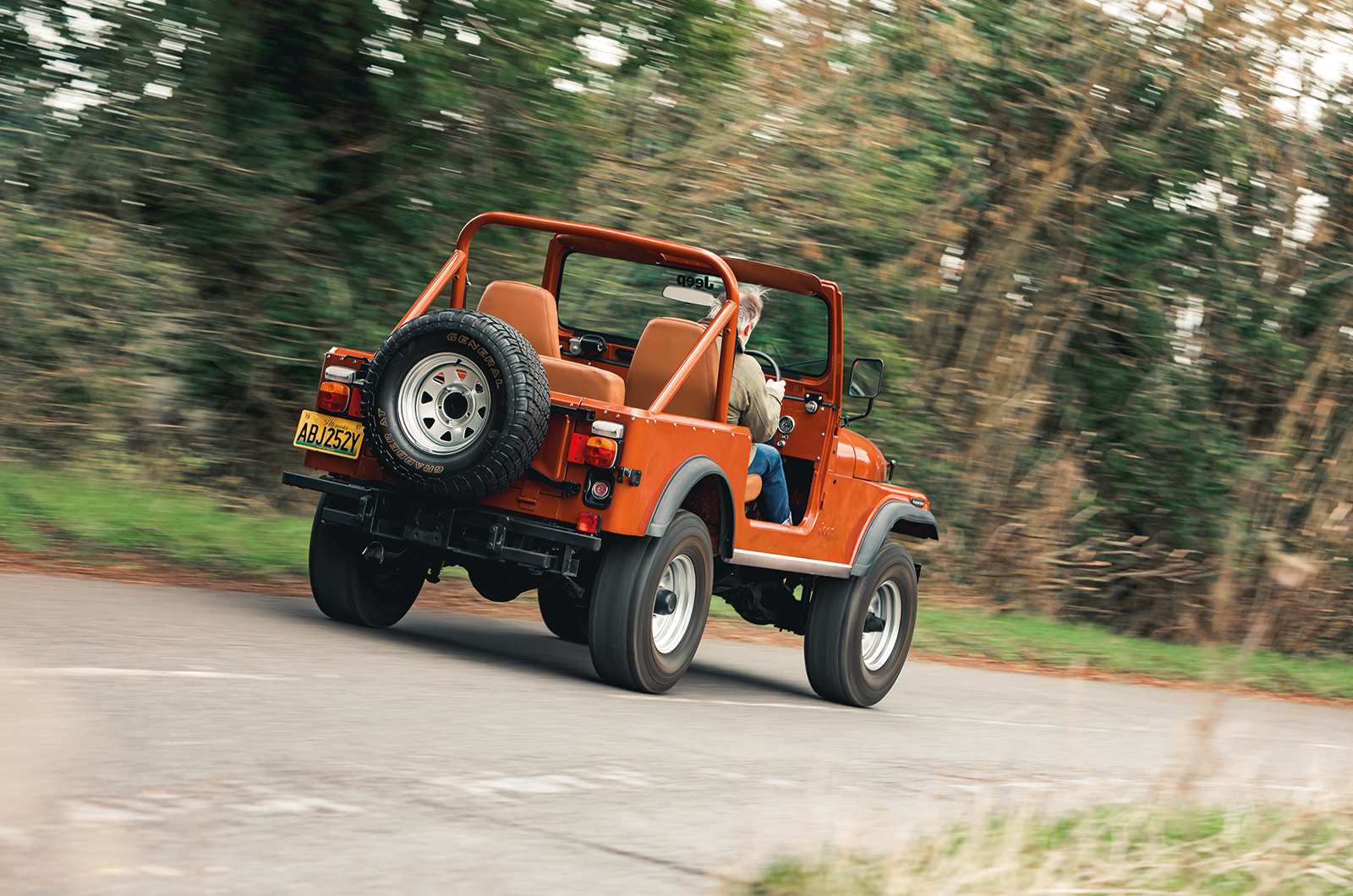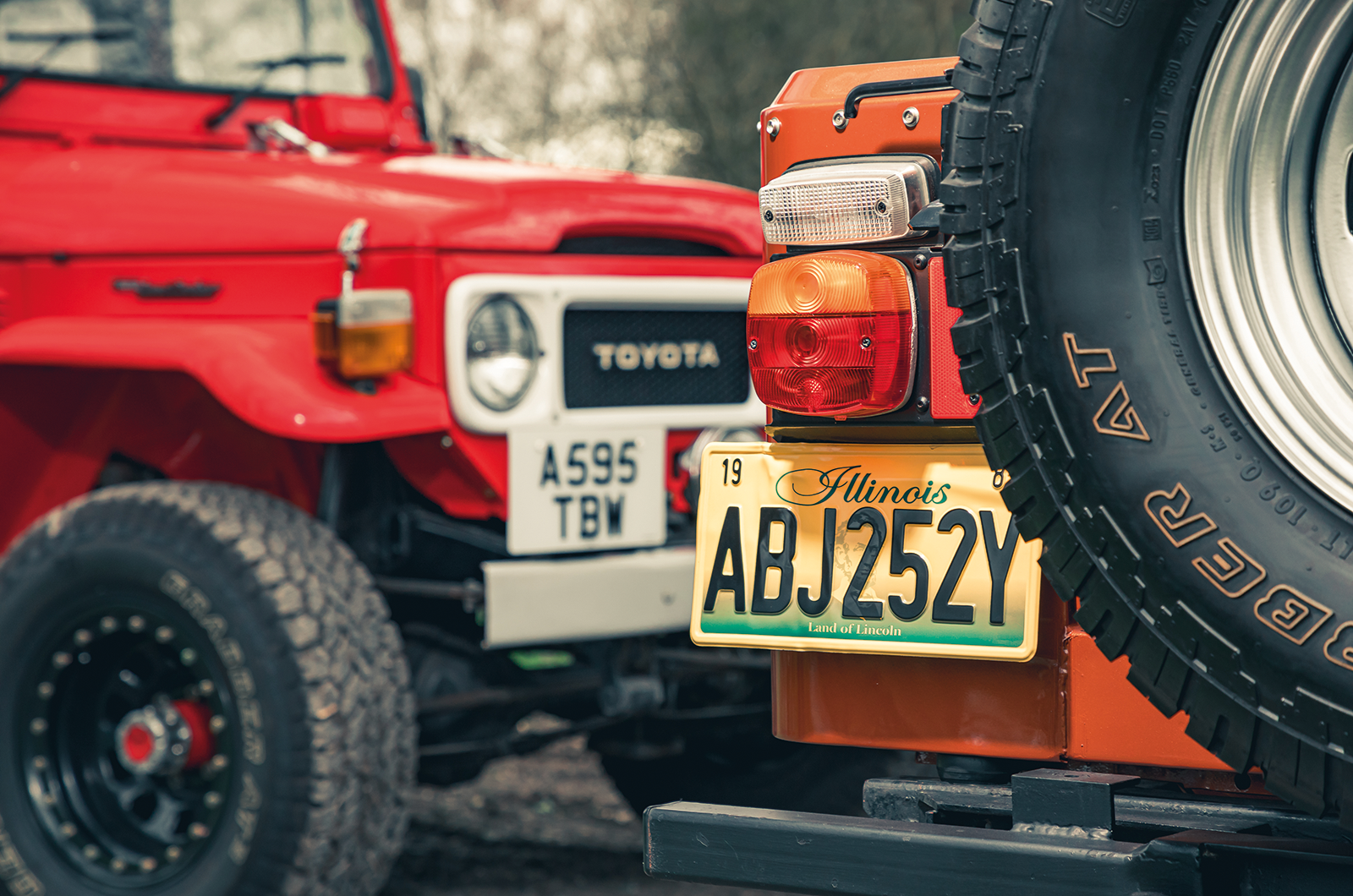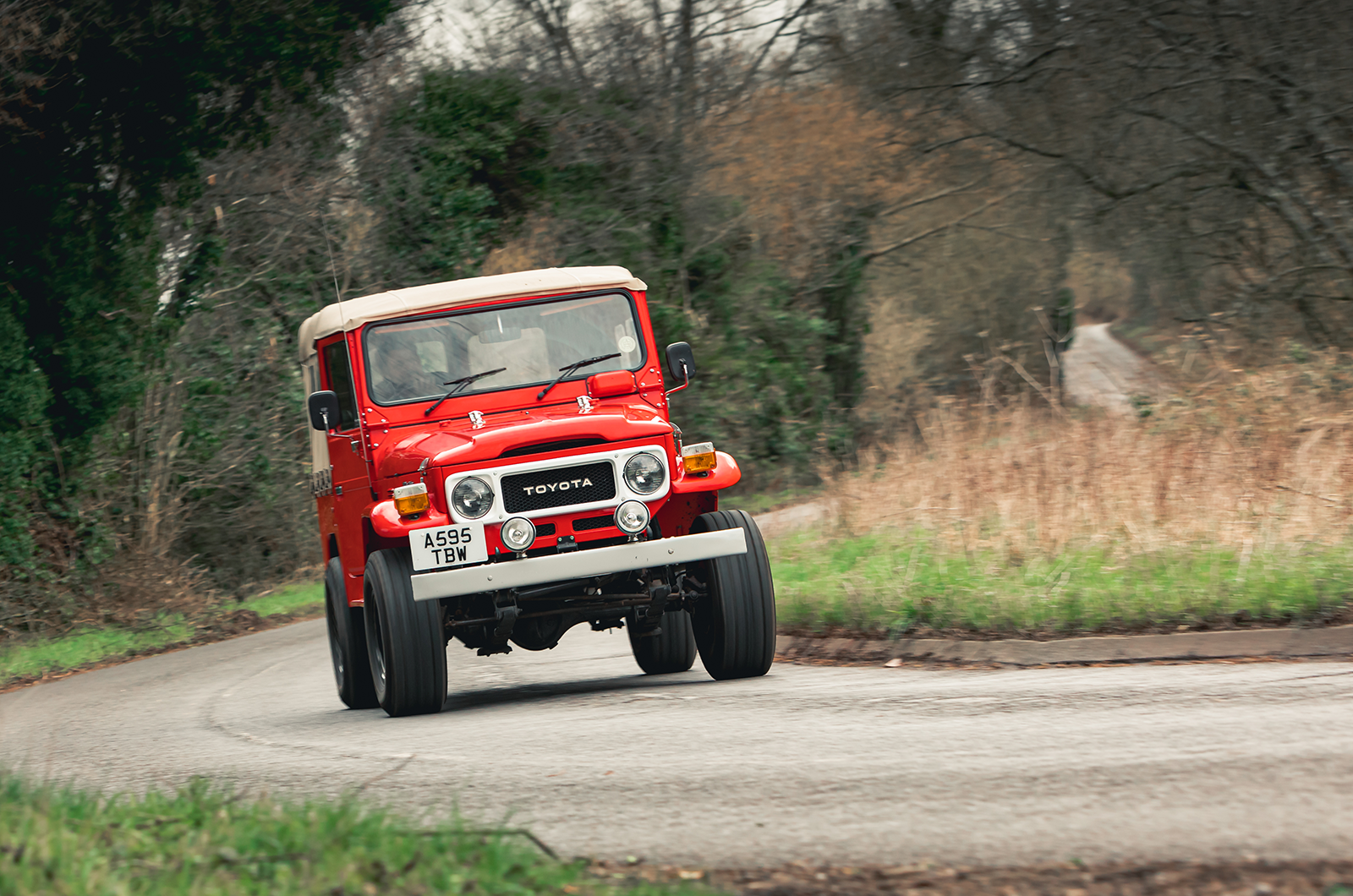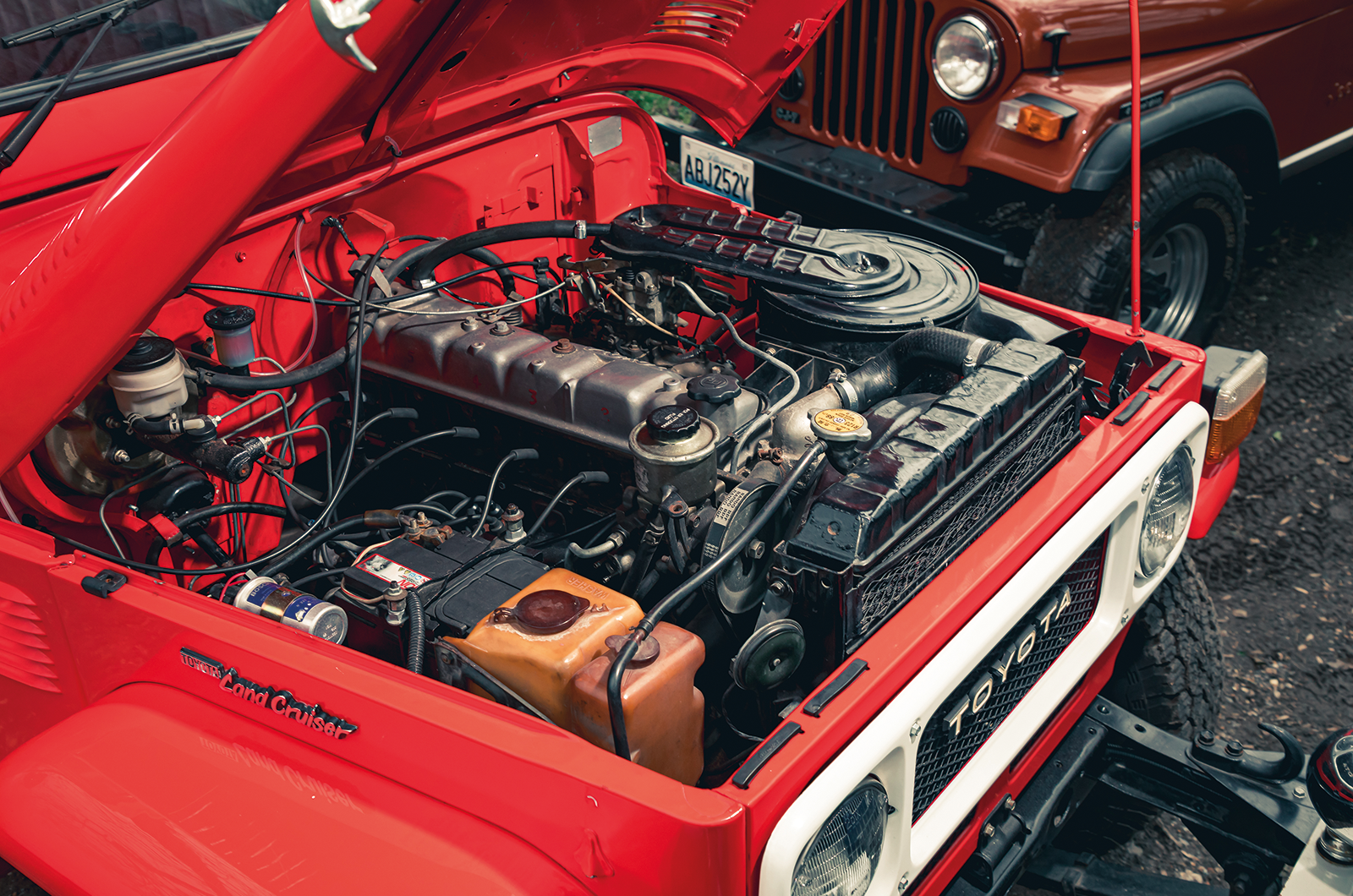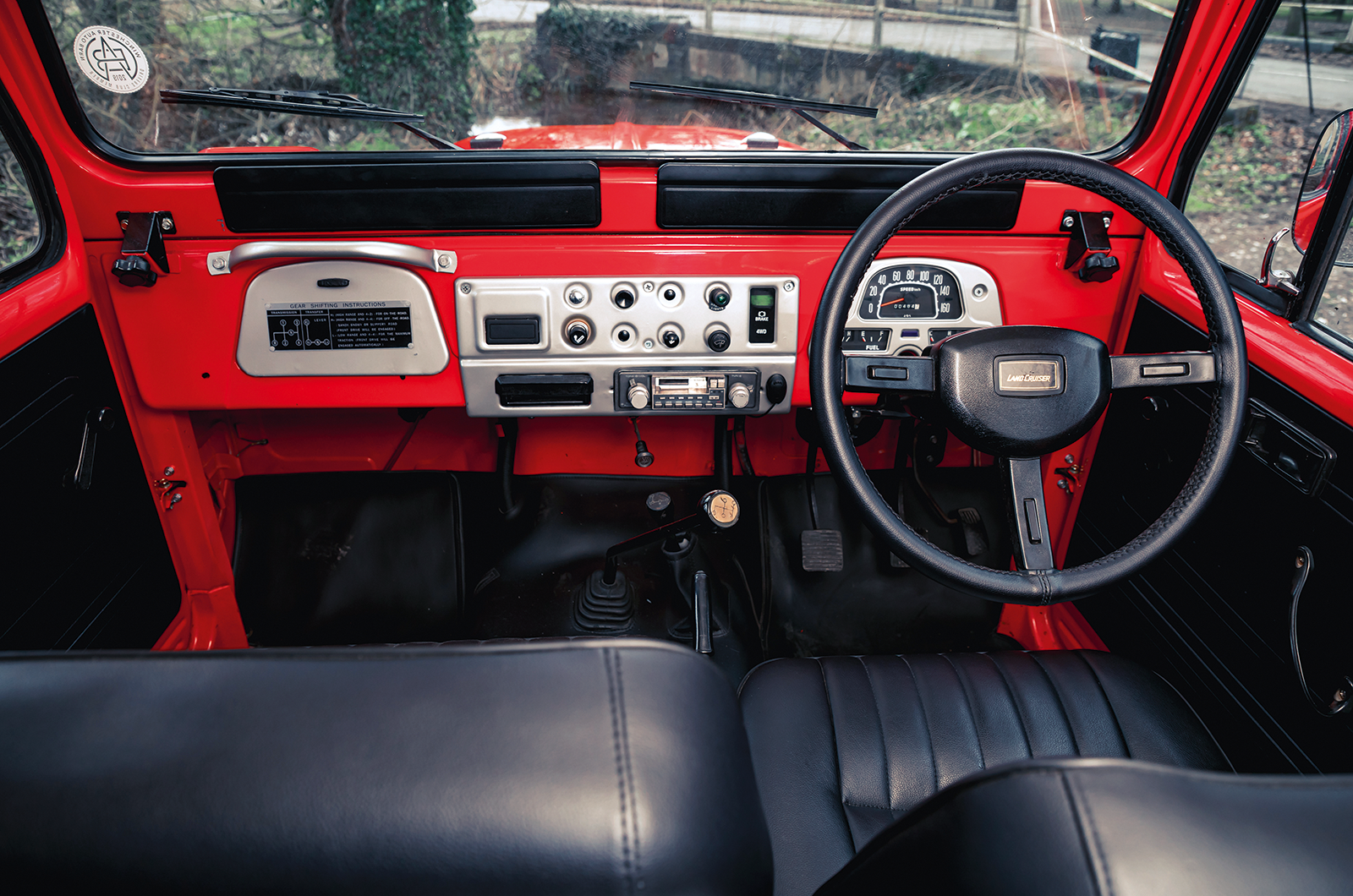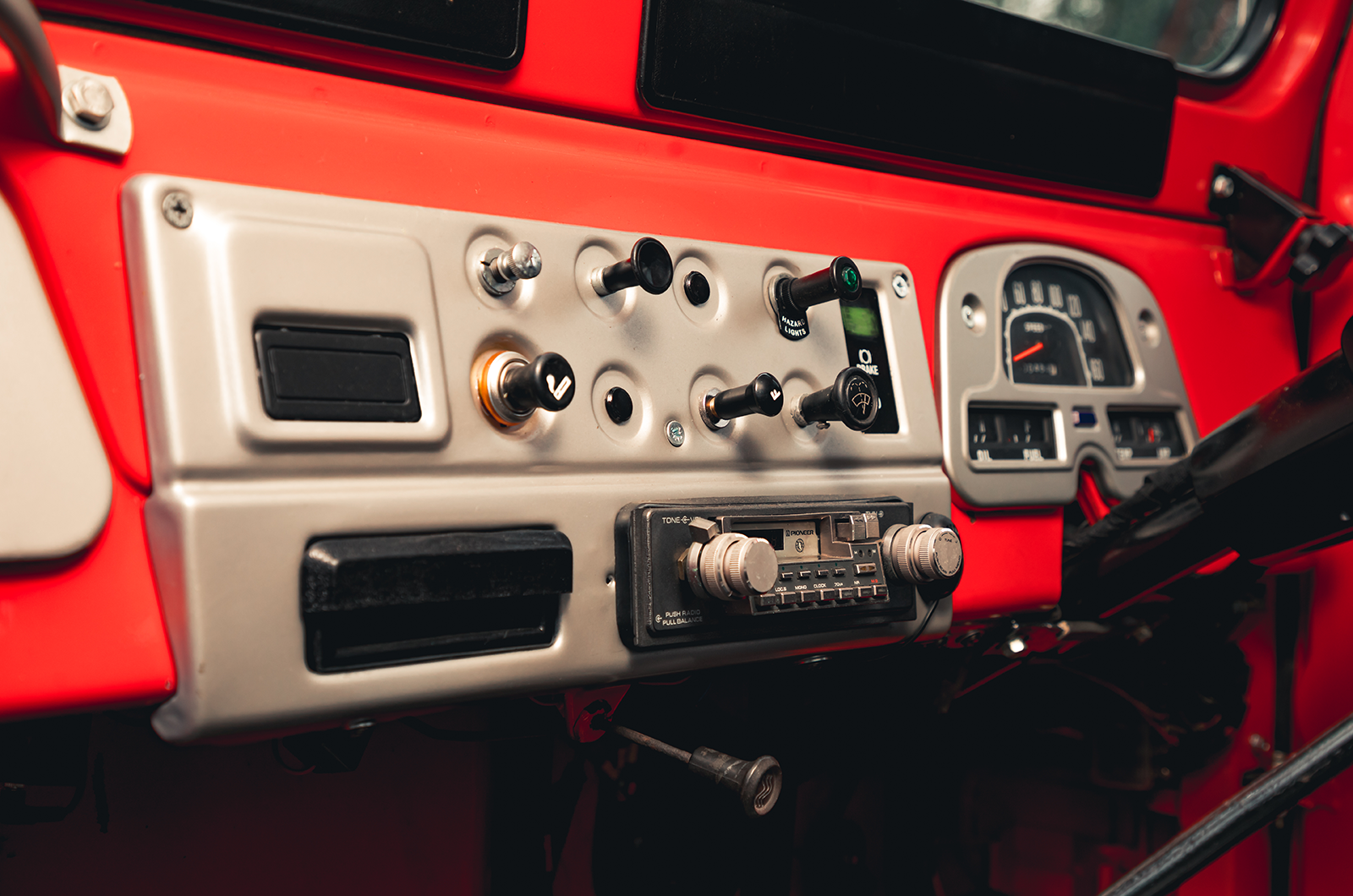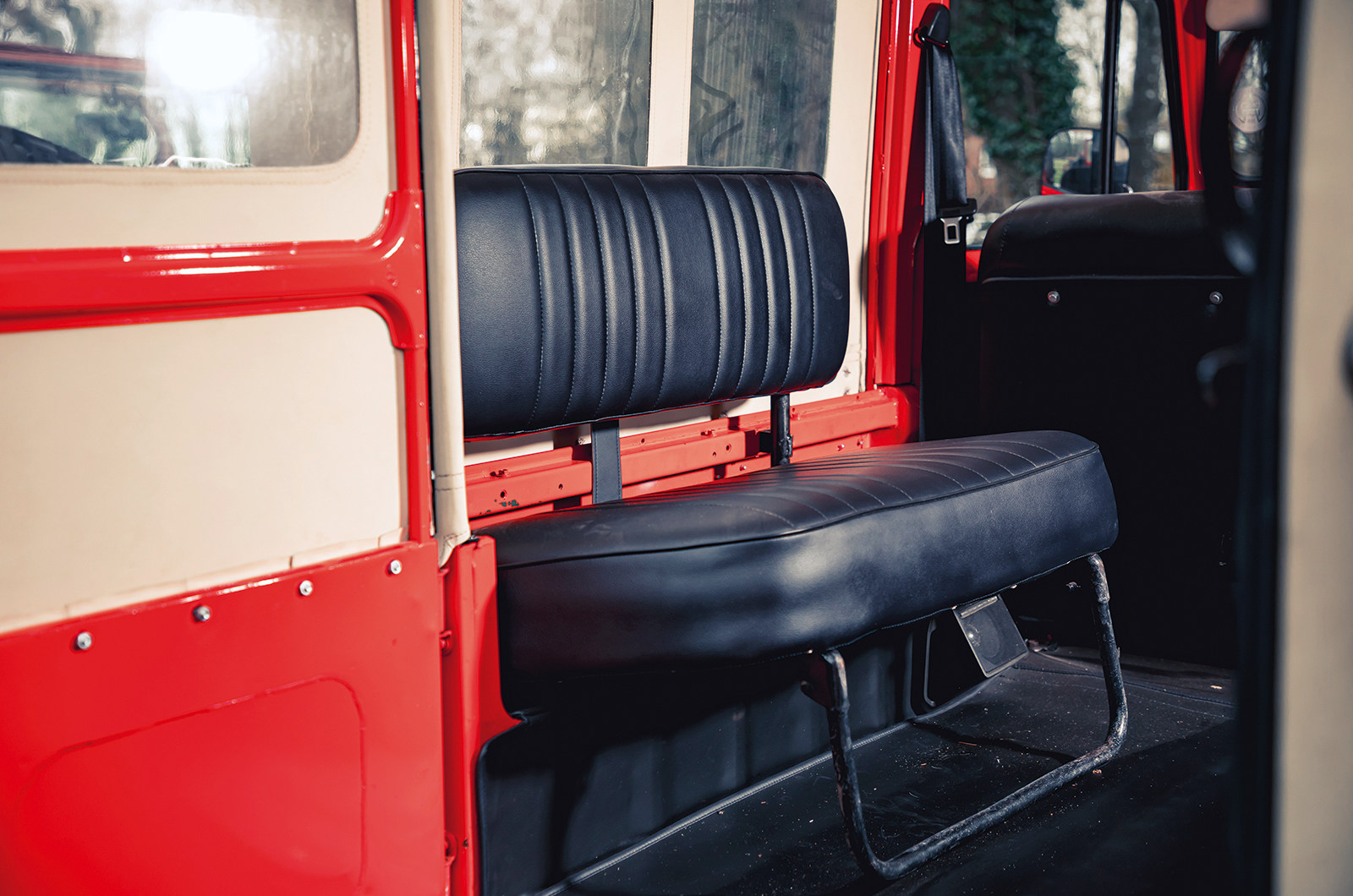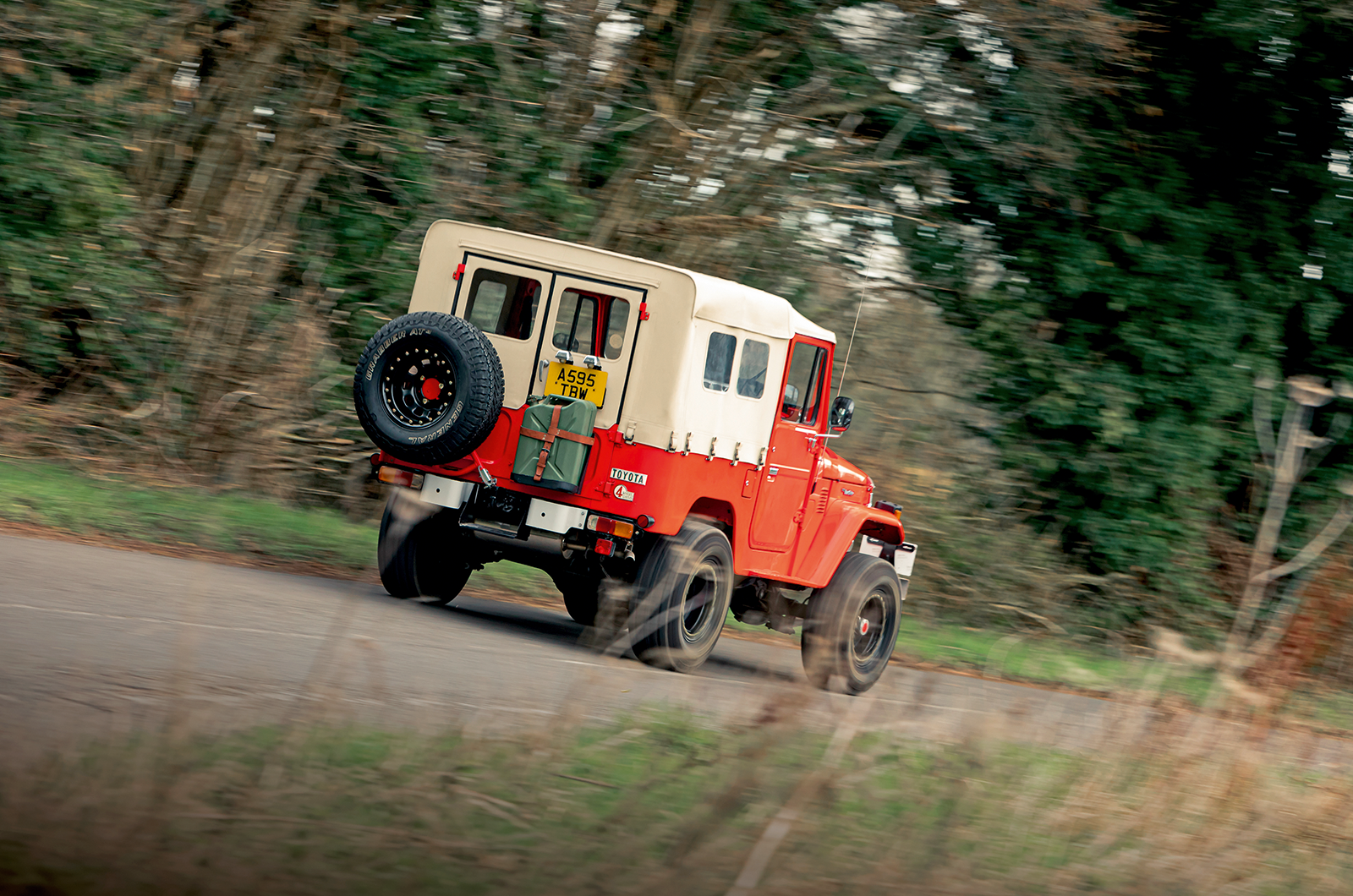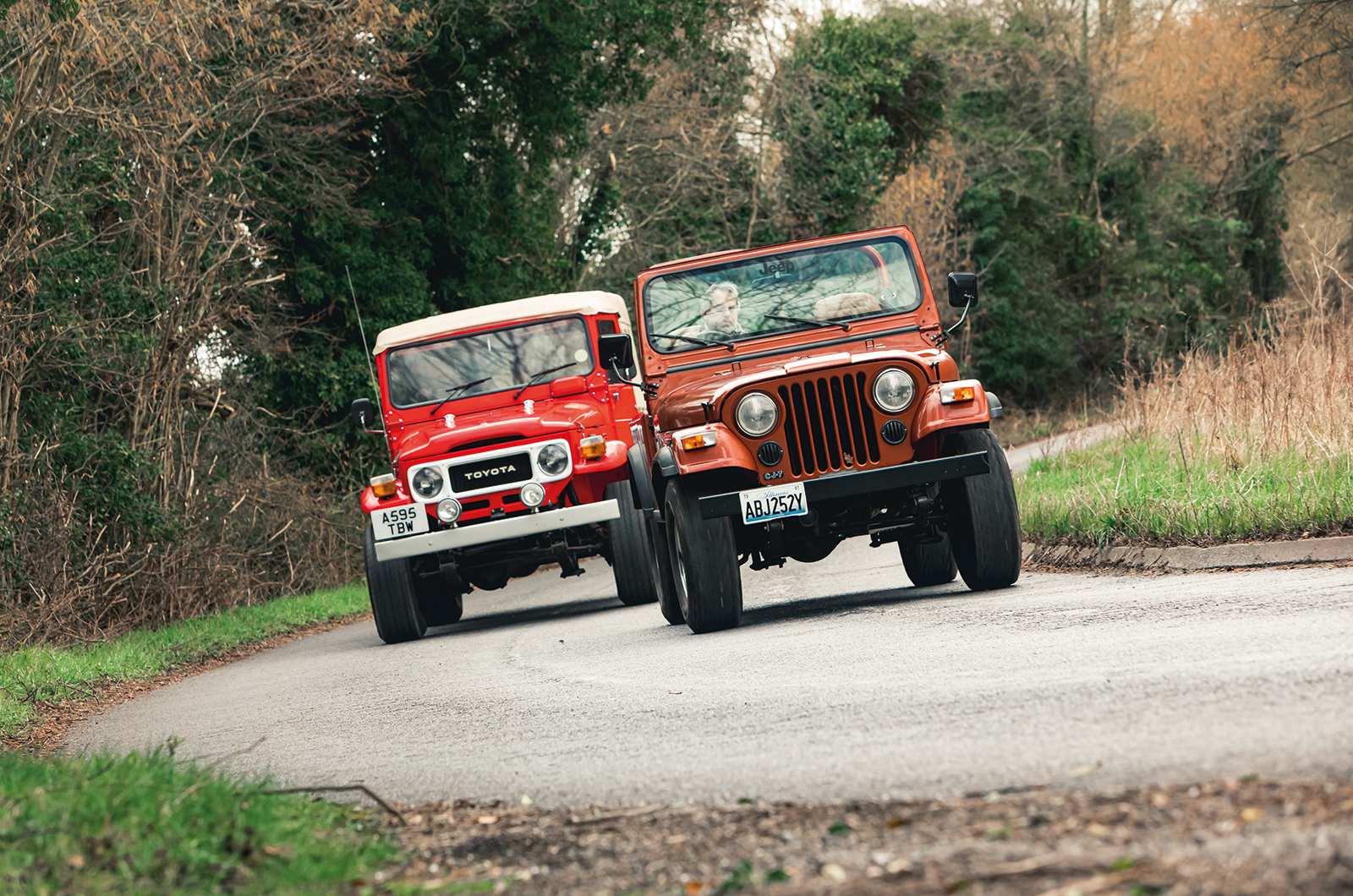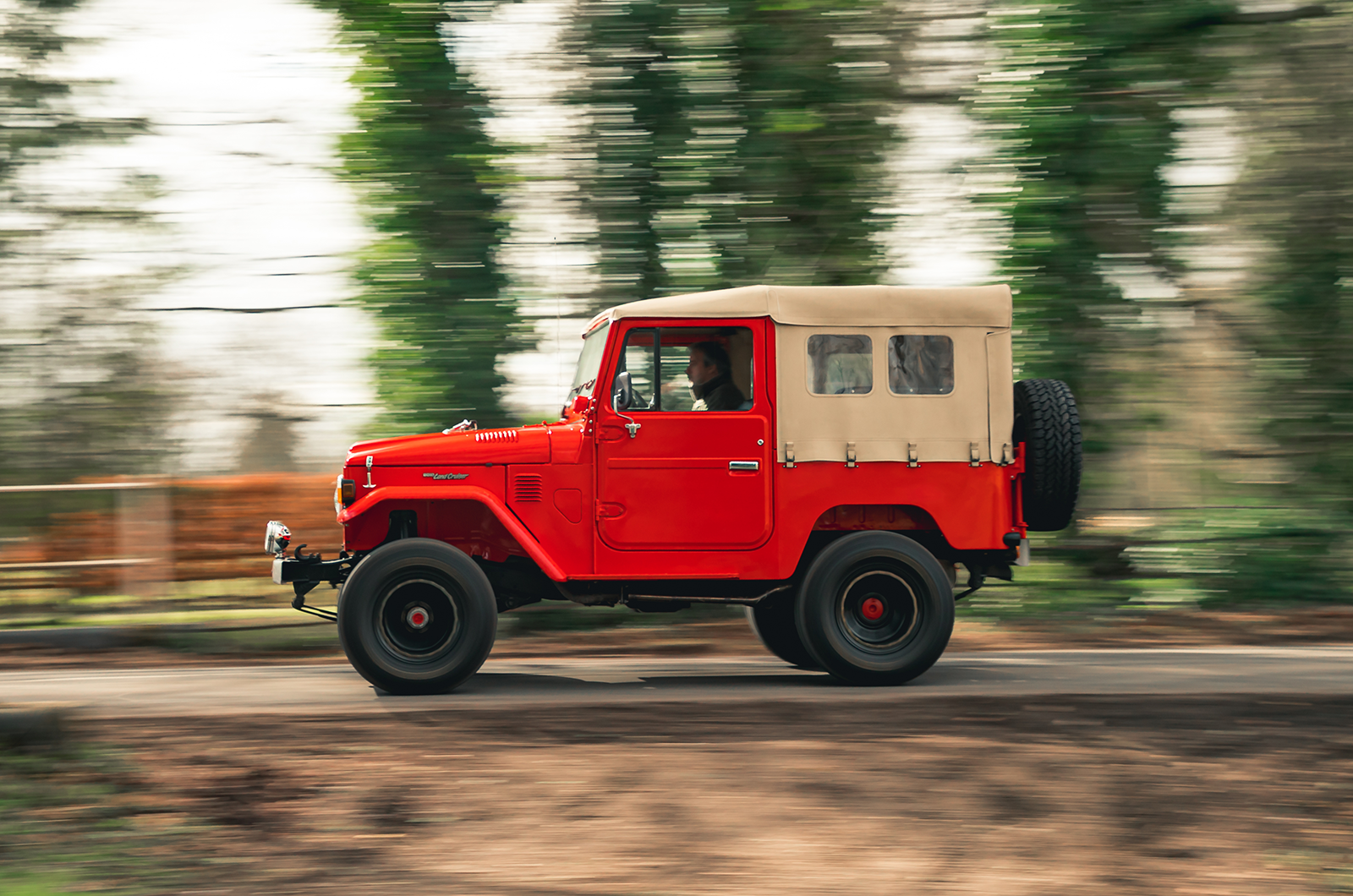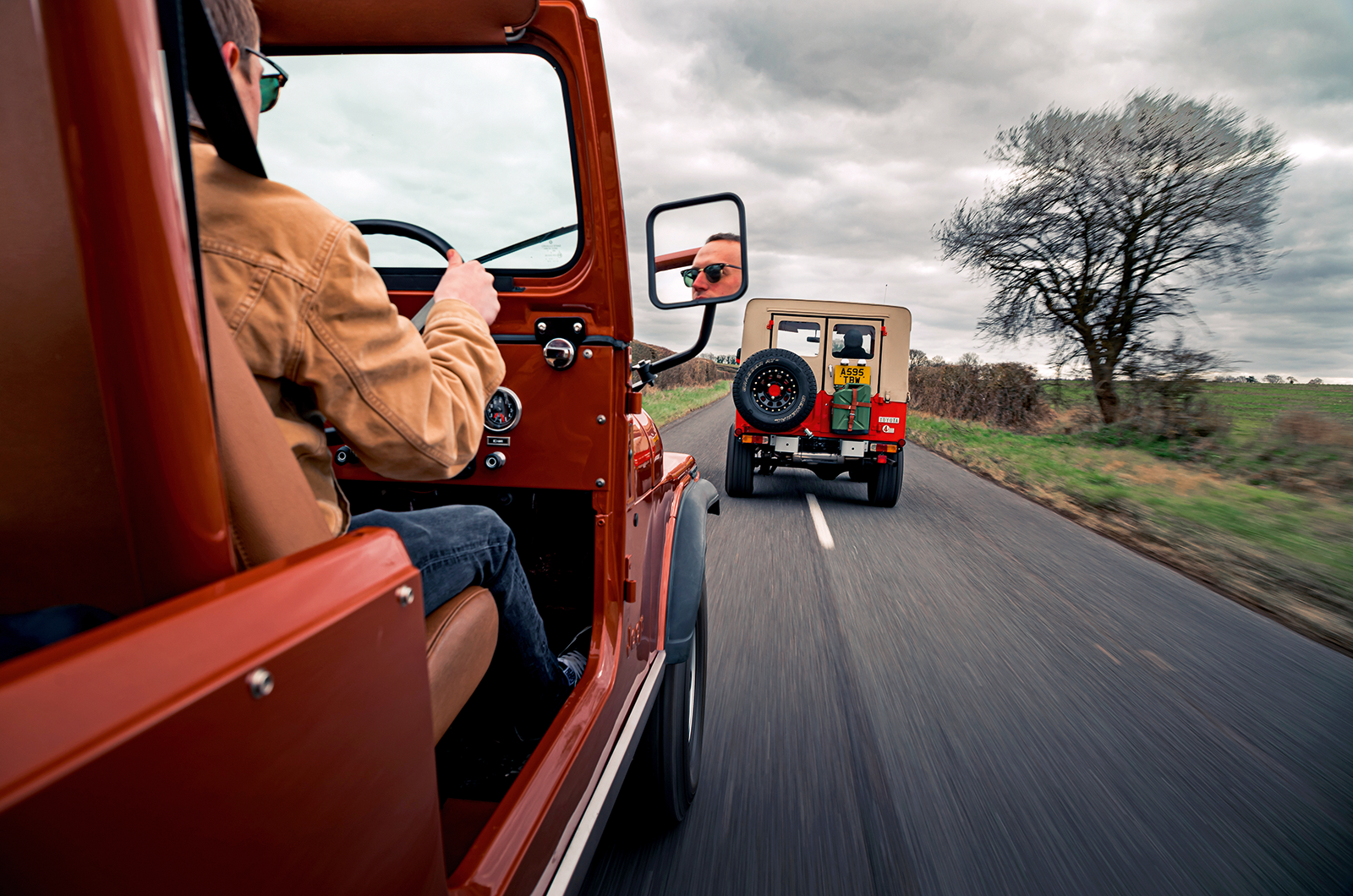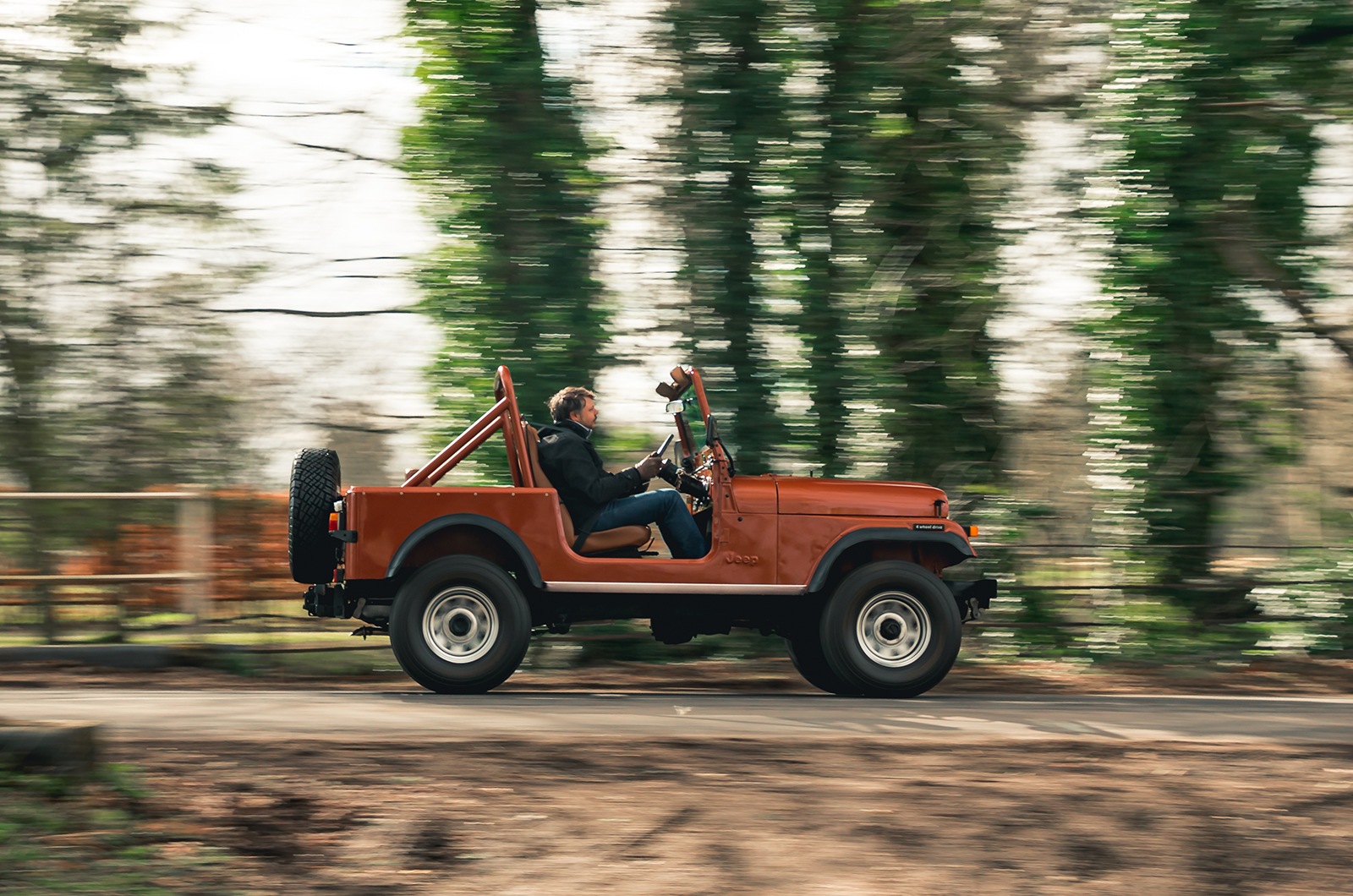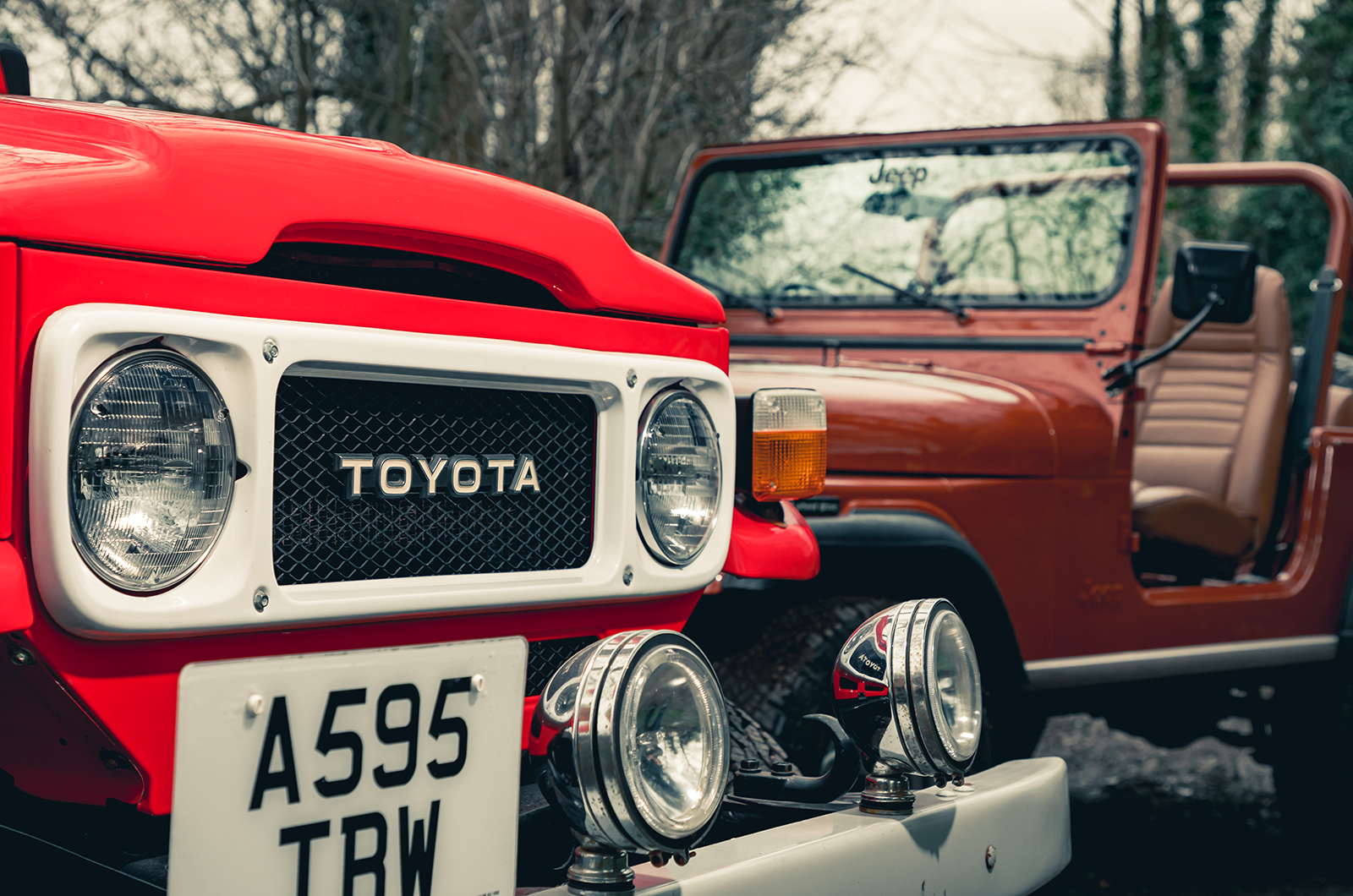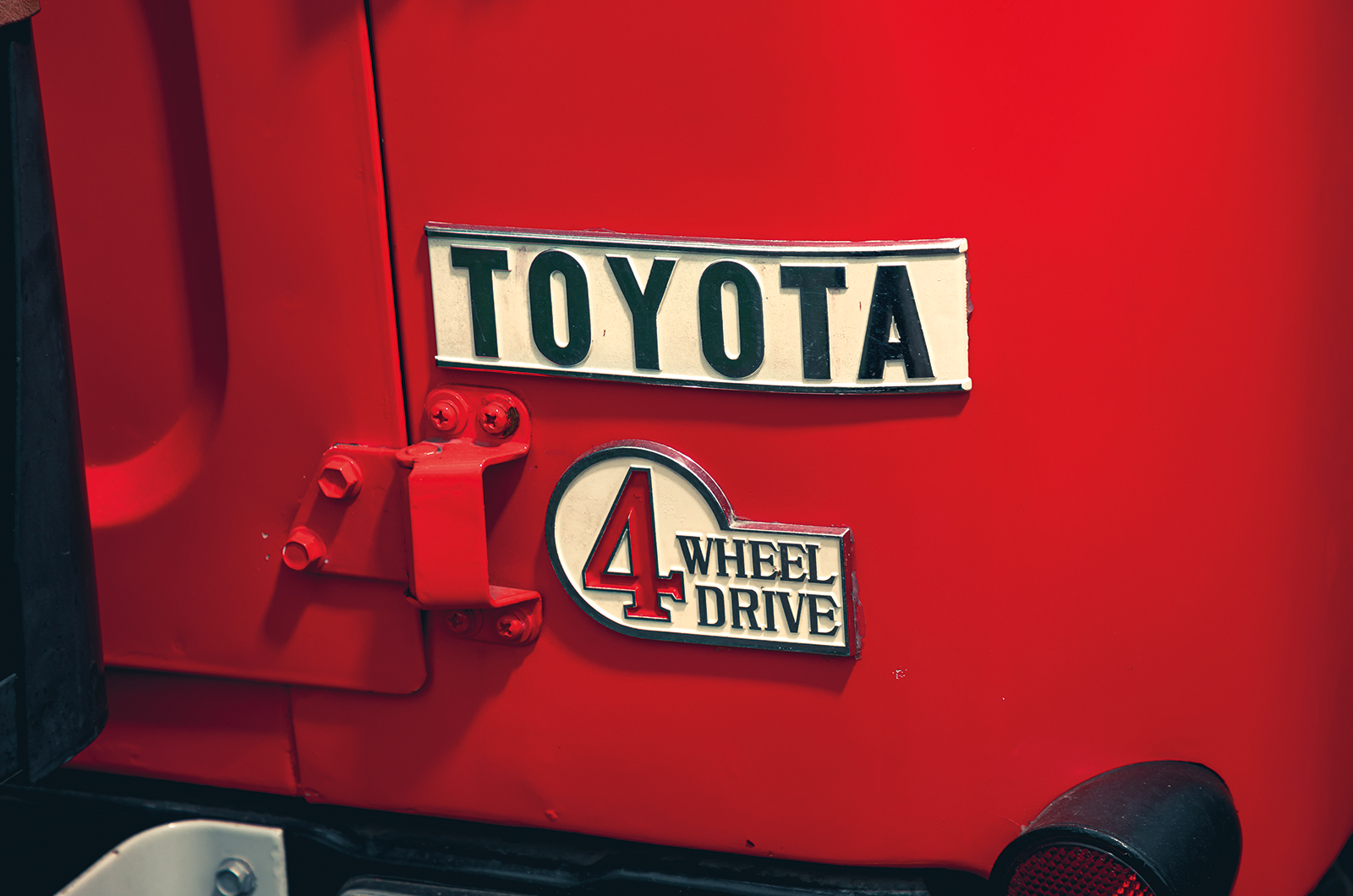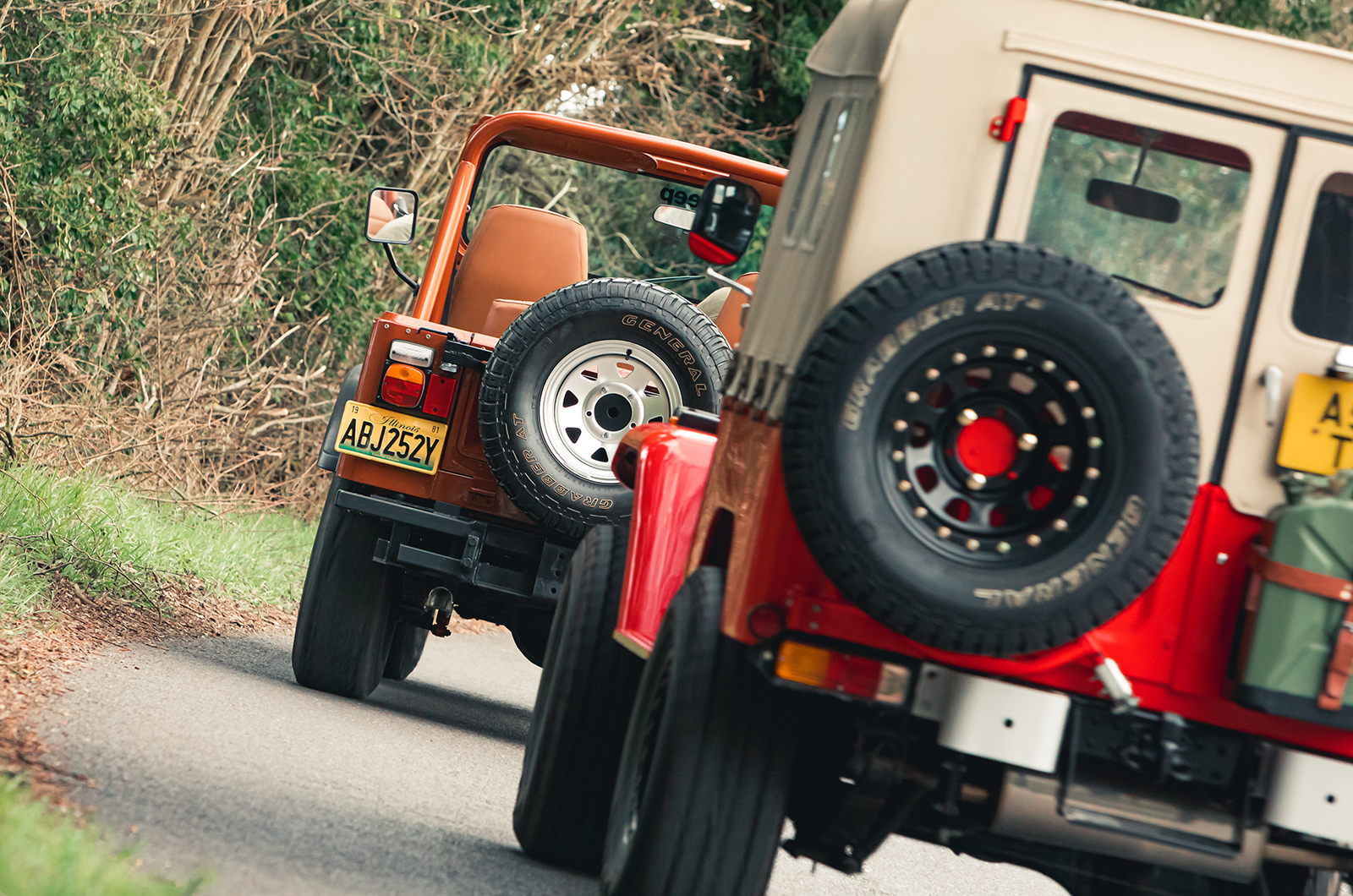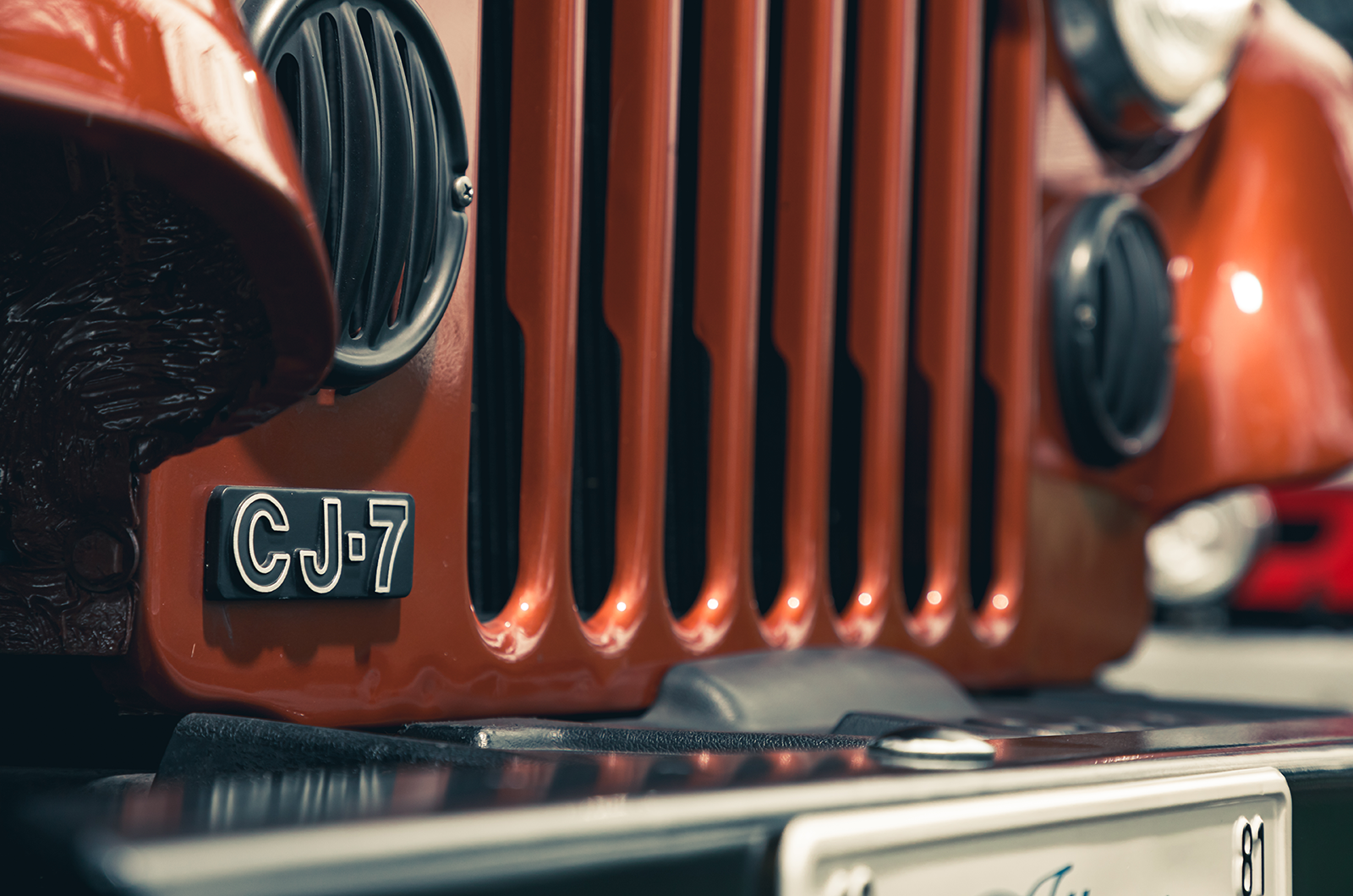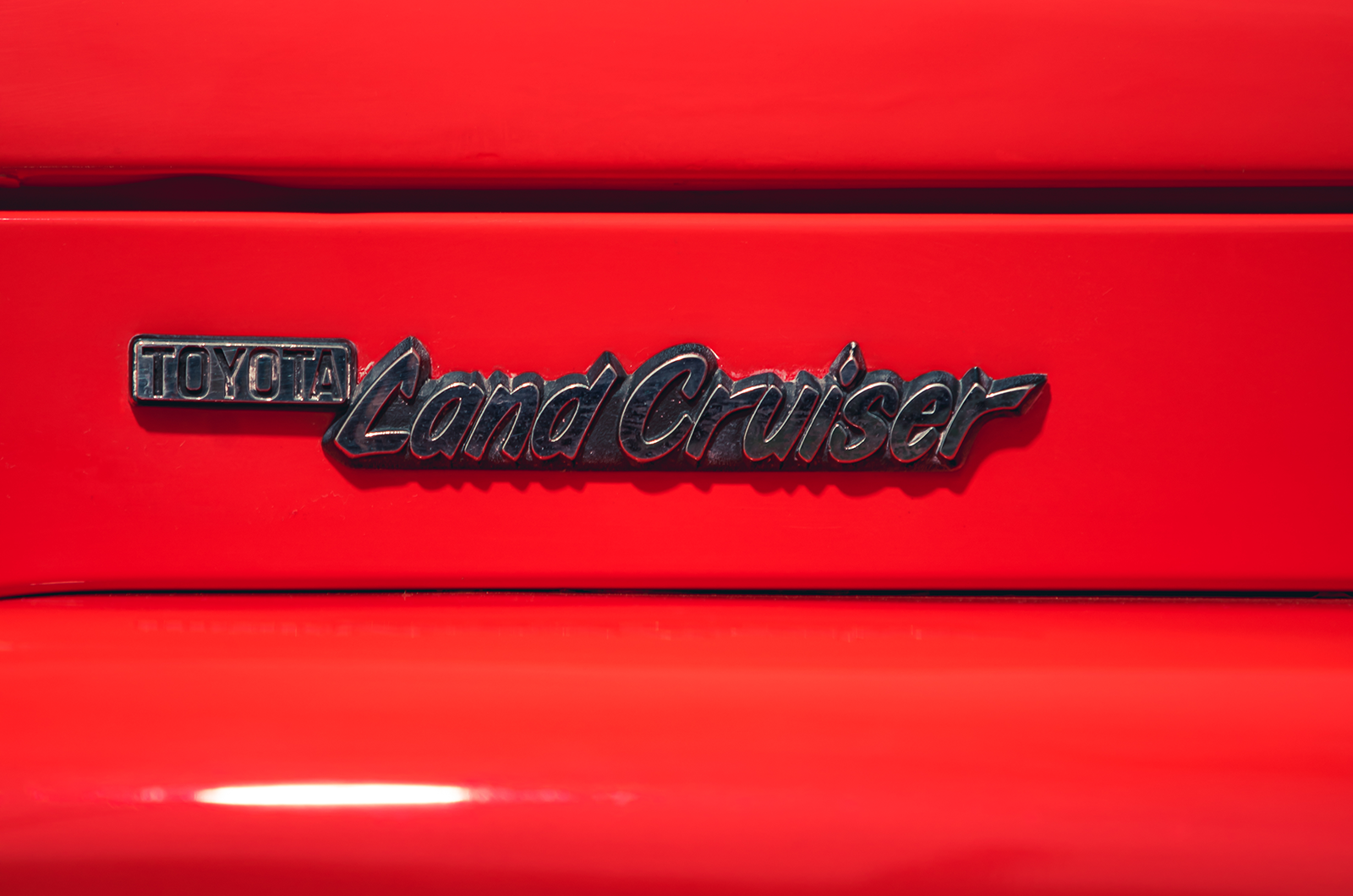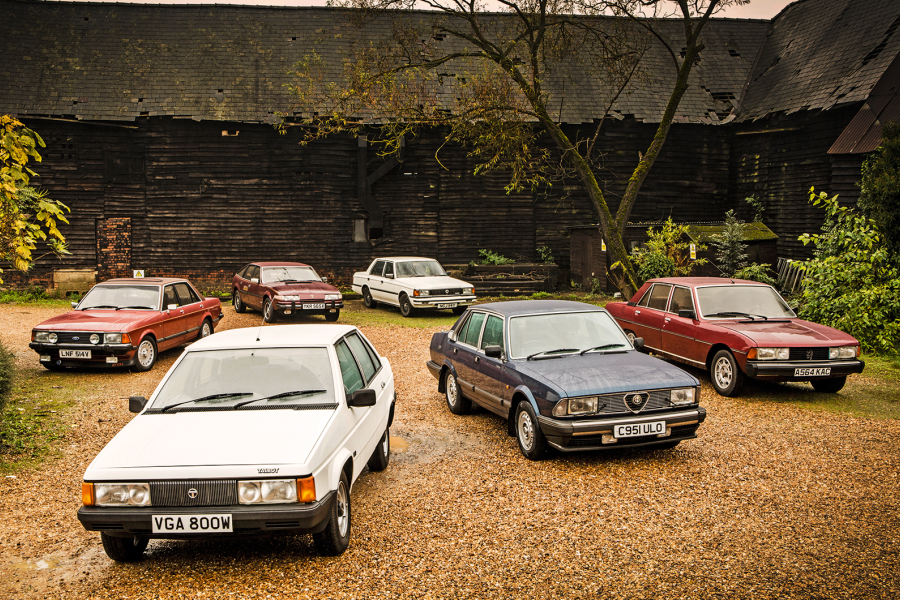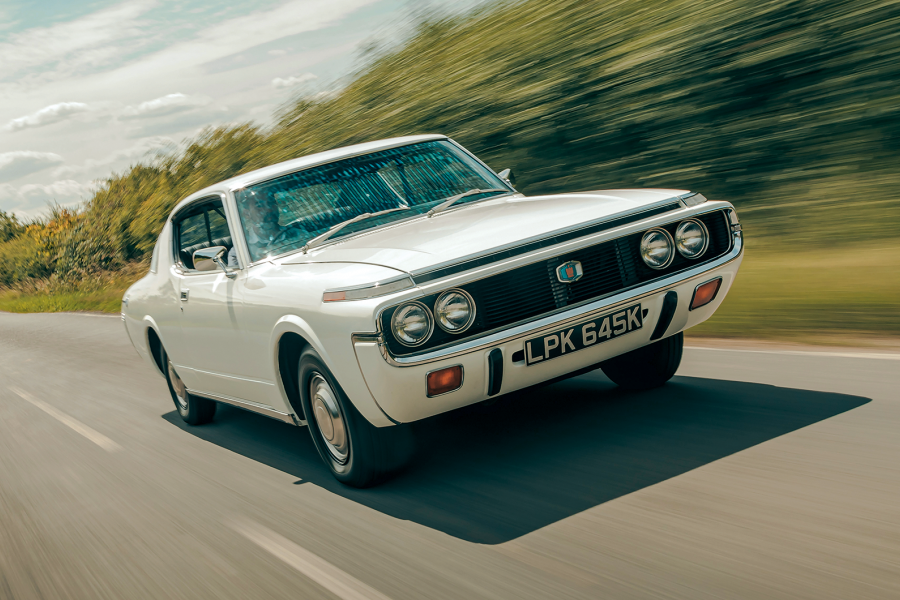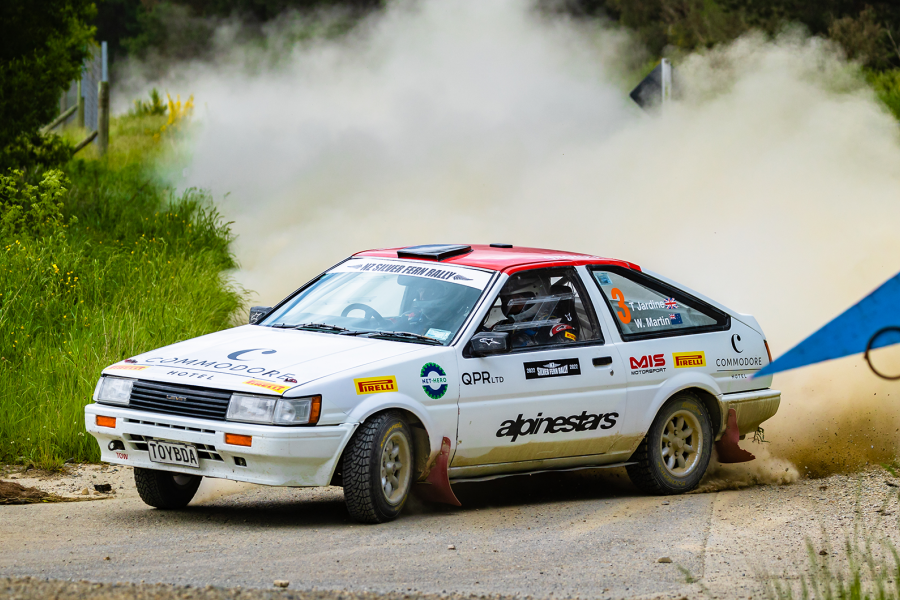The double back doors fill the rear-view mirror more with pillar and spare wheel than road, but where this car prefers to go traffic is not a concern.
The Toyota FJ40 stands 3840mm long, with a 2285mm wheelbase
Today, though, it is. With both standing tall on chunky General Grabber tyres, wandering is less a tendency and more of an insistence, and steering at anything approaching sensible speeds is more an approximation than an outright command.
But both are slim in width and shouldn’t cause anyone else on the road much trouble, only you and your heart rate as you wobble the off-roader past within the white lines.
They’re cars that require familiarity, in which you get better at planning ahead, knowing what you are gravitating towards, and you can second-guess them more easily.
Luckily for other road users, the busyness in the cabin is masked from the outside and they both seem settled in these country-lane surroundings.
Widely spaced pedals demand a cowboy-like bandy-legged stance when piloting the Jeep
Pull away and the FJ gasps for air while the Jeep is more raucous.
As speed gathers – albeit not quickly – each crest and crack in the road has a knock-on effect to what the wagon wants to do, leading to three-way negotiations opening again between driver, steering and tyres to maintain your course.
But there is enough bite to keep it in check, and any alarm that the FJ’s speedometer needle is winding around the semi-elliptic speedo to 60 subsides when you remember it’s in kilometres and not miles per hour.
The Jeep feels much tighter, as you would expect from a car taking its post-rebuild bow.
Few outside of its keeper Jones, even, have driven this car since it emerged from restoration and he has done a fine job over the past nine years, dragging it from garden abandonment to its present show-worthy state.
The 1305kg Jeep CJ-7 has a wheelbase that measures 2375mm
The strong gearchange is crisp, the clutch bite high, where the long wand of the Toyota requires a good part of your attention.
If the Jeep’s lever navigates its gate intuitively, the FJ regularly loses its way – but has the torque to cover any blushes.
The sensation of buffeting makes the CJ a visceral experience not particularly suited to the UK, but rather rumbling around as the sun goes down behind some dusty North American mountain range.
The Toyota doesn’t have quite the versatility to be at ease on the beachfront, seaweed smoothie in its driver’s hand.
Yet that, curiously, is a large part of the appeal of this extensively restoredT oyota, a former long-term resident at Winchester Auto Barn.
With its external door hinges, rear-mounted spare and girder of a front bumper with a winch bracket, it isn’t trying to be anything else.
Toyota built around 1.1m FJ40s between 1960 and 1986
It knows where it’s going and nothing will get in its way, be it ditch, hill or rocky path. It looks more ready for an off-road life: prepared for anything the elements will throw at it.
It was forever thus, too, because an ownership survey in Pick-up, Van & 4WD magazine in 1979 found that more FJ owners ventured off the beaten track, and more often, than their Jeep, International Scout, Ford Bronco and Chevy Blazer contemporaries.
Buy one today on the back of its rising kudos, give it a life on Tarmac and you’ll have to suffer the compromises.
And I would, in a heartbeat. It has a charm, an unassuming ruggedness, that is just so appealing it would make you quickly forgive its anachronisms and idiosyncrasies.
These two former military machines are now fashionable accessories
Both are halcyon models for the genre, landmarks in their time.
What went before were not entirely suitablefor everyday use, more warzone than civvy street, and what fed out from around them was a sprawling range of filtered, watered-down and inflated comfort utility vehicles whose tentacles stretch as far as today’s high streets. Often, riding the coat-tails of the legend with questionable retro design cues.
It seems odd to suggest that the Land Cruiser is probably the less popular or more contrary choice, because it was Toyota’s biggest seller in America for a time and had hit the million mark worldwide by 1980.
But the Jeep feels more Matchbox toy made life-sized compared to the real-world FJ. And there ’s nothing worse than a toy that doesn’tg et used.
Images: Max Edleston
Thanks to Stellantis NV; Winchester Auto Barn
Factfiles
Jeep CJ-7
- Sold/number built 1976-’86/379,299
- Construction steel ladder chassis, steel panels
- Engine all-iron, ohv 2474cc ‘four’, Rochester Varajet II two-barrel carburettor
- Max power 87bhp @ 3800rpm
- Max torque 125lb ft @ 2600rpm
- Transmission four-speed manual or three-speed auto, transfer box, 4WD
- Suspension live axles, leaf springs, telescopic dampers
- Steering power-assisted recirculating ball
- Brakes discs front, drums rear
- Length 12ft 9in (3886mm)
- Width 5ft (1524mm)
- Height 5ft 7in (1702mm)
- Wheelbase 7ft 10in (2375mm)
- Weight 2877lb (1305kg)
- 0-60mph 16 secs
- Top speed 75mph
- Mpg 21
- Price new £9372.35 (1982)
- Price now £15-30,000*
Toyota FJ40
- Sold/number built 1960-’86/c1.1m
- Construction steel ladder chassis, steel panels
- Engine all-iron,ohv 4230cc ‘six’, twin-choke Aisan carburettor
- Max power 125bhp @ 3600rpm
- Max torque 200lb ft @ 1800rpm
- Transmission four-speed manual, transfer box, 4WD
- Suspension live axle, leaf springs, telescopic dampers
- Steering worm and roller
- Brakes drums
- Length 12ft 7in (3840mm)
- Width 5ft 4½in (1665mm)
- Height 6ft 4½in (1940mm)
- Wheelbase 7ft 6in (2285mm)
- Weight 3650lb (1655kg)
- 0-60mph 18.7 secs
- Top speed 84mph
- Mpg 16
- Price new £3215.16 (1976)
- Price now £15-30,000*
*Prices correct at date of original publication
READ MORE
Future classic: Jeep Wrangler
Guilty pleasures: Toyota Crown Coupé
Buyer’s guide: Toyota MR2 Mk2
Luxury on the farm: Range Rover vs Mercedes G-Wagen
Jack Phillips
Volvo-owning Jack Phillips is a contributor to and former Deputy Editor of Classic & Sports Car
